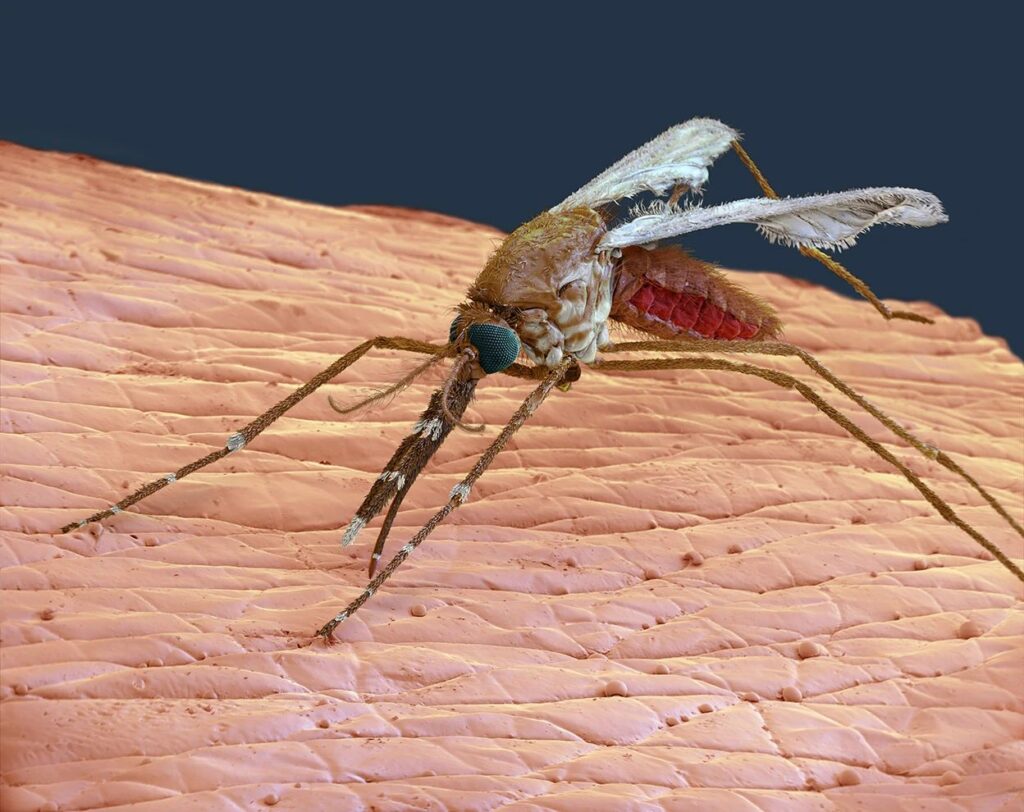On the 20th August 2024 As the world observes World Mosquito Day, attention is drawn to the significant health risks posed by mosquito bites. Far from being just an itchy annoyance, mosquito bites can transmit deadly diseases such as dengue, malaria, and yellow fever, which continue to claim hundreds of thousands of lives annually.
Mosquito-borne diseases are a significant global health concern, particularly in tropical and subtropical regions where they disproportionately affect the poorest populations. According to the World Health Organization (WHO), vector-borne diseases, which include those transmitted by mosquitoes, account for more than 17% of all infectious diseases, causing over 700,000 deaths each year.
Malaria, a parasitic infection spread by Anopheline mosquitoes, is one of the deadliest, with an estimated 219 million cases worldwide and over 400,000 deaths annually. The majority of these fatalities occur in children under the age of five.
Dengue is the most widespread viral infection transmitted by Aedes mosquitoes. Over 3.9 billion people in more than 129 countries are at risk of contracting dengue, with approximately 96 million symptomatic cases and around 40,000 deaths reported annually.
Other dangerous diseases transmitted by mosquitoes include yellow fever, Zika virus, chikungunya fever, and Japanese encephalitis. These diseases not only cause acute illness but also lead to chronic suffering, long-term disability, and significant economic burdens in affected communities.
The spread of these diseases is influenced by various factors, including demographic changes, environmental conditions, and social determinants. Global travel, trade, and unplanned urbanization have also contributed to the spread of vector-borne diseases to new regions.
Despite the significant risks, many mosquito-borne diseases are preventable. WHO emphasizes the importance of protective measures to reduce exposure to mosquito bites,
Wear loose-fitting, long-sleeved shirts and pants** to minimize skin exposure.
Use mosquito nets while sleeping to protect against bites, and the apply mosquito repellents to exposed skin to deter mosquitoes, and the install window screens to prevent mosquitoes from entering homes, and adopting these simple yet effective measures, individuals can protect themselves and others, thereby helping to reduce the spread of mosquito-borne diseases.
World Mosquito Day, commemorated every year on August 20th, marks the discovery by British doctor Sir Ronald Ross in 1897 that female Anopheles mosquitoes are responsible for transmitting malaria. The day serves as a reminder of the ongoing global fight against mosquito-borne diseases and the importance of continued research, prevention, and public awareness.
To learn more about vector-borne diseases and how to protect yourself, visit the WHO website [here](https://www.who.int/news-room/fact-sheets/detail/vector-borne-diseases).
.

In an interview with Dr. Chris Kabay public health expect in his office at Wilkinson Road said In Sierra Leone, mosquitoes pose a significant public health threat due to their ability to transmit various dangerous diseases. Like malaria remains the most prevalent mosquito-borne disease in the country, other diseases like yellow fever, Zika virus, chikungunya fever, and Japanese encephalitis also present serious risks, though their occurrence and impact vary.
He said the prevalence for malaria is the most common mosquito-borne disease in Sierra Leone, with nearly the entire population at risk. It is a leading cause of illness and death, particularly among children under five and pregnant women.
He said the impact malaria significantly contributes to the country’s high mortality rate, with thousands of cases and hundreds of deaths reported annually. The disease also imposes a heavy economic burden due to healthcare costs and lost productivity.
He continues that the prevalence for Yellow fever is endemic in Sierra Leone the country is part of the “yellow fever belt” in Africa, where outbreaks can occur sporadically, and the impact of the incidence of yellow fever is lower compared to malaria, it remains a serious threat due to its high mortality rate. Vaccination campaigns have been critical in reducing the impact of yellow fever in the country.
He added that the prevalence Zika virus has not been widely reported in Sierra Leone, but the presence of Aedes mosquitoes, which transmit the virus, poses a potential risk, and the impact If introduced, Zika could have significant public health implications, particularly for pregnant women, as the virus is associated with severe birth defects.
Prevalence Chikungunya fever has been reported in parts of West Africa, including Sierra Leone, though the prevalence is generally low, and the impact on the disease can cause debilitating joint pain, which may persist for months or even years, impacting the quality of life and economic productivity of affected individuals.
Prevalence Japanese encephalitis is primarily a concern in Asia, and there have been no significant reports of the disease in Sierra Leone, and impact If introduced, the disease could pose a severe risk due to its high fatality rate and potential to cause long-term neurological damage.
Dr. Kabay public said mosquitoes in Sierra Leone are responsible for the widespread transmission of malaria, which remains the most pressing public health issue related to these vectors. The country also faces risks from other mosquito-borne diseases, though their current impact is less pronounced. Mosquitoes contribute to significant morbidity and mortality, and efforts to control mosquito populations and prevent bites are crucial to reducing the burden of these diseases.
He all the preventive measures such as the use of insecticide-treated nets (ITNs), indoor residual spraying (IRS), and public health campaigns promoting the use of mosquito repellents and proper sanitation practices are essential in mitigating the impact of mosquito-borne diseases in Sierra Leone. Vaccination campaigns for yellow fever and ongoing monitoring for emerging threats like Zika and chikungunya are also vital components of the country’s public health strategy

